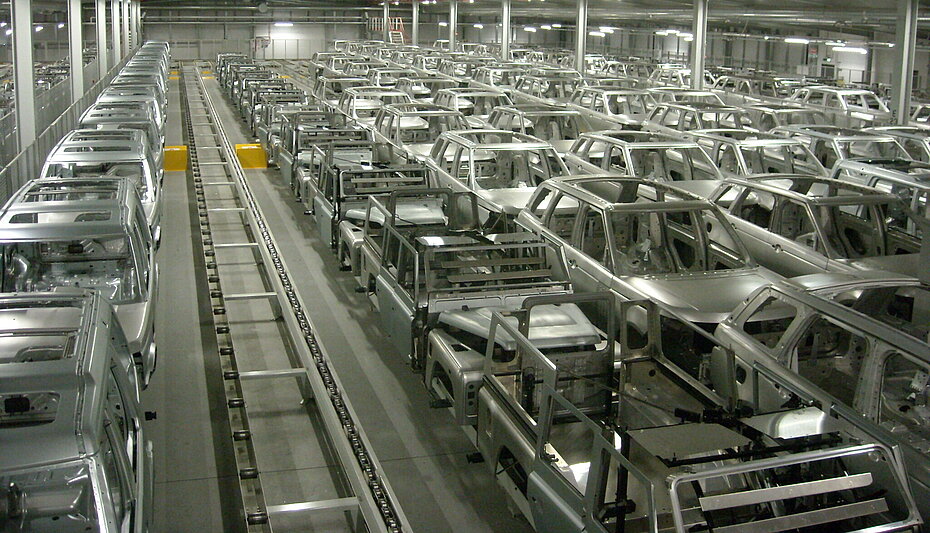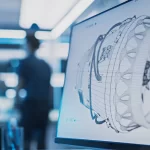In the rapidly evolving world of manufacturing, robotics have become a pivotal component in modern assembly line systems. From enhancing efficiency to improving precision, robots are transforming how products are assembled across various industries. This blog explores the integral role of robotics in contemporary assembly line systems, examining their benefits, applications, and the future of automated manufacturing.
What Are Assembly Line Systems?
Assembly line systems are production setups where work is divided into a series of sequential tasks, each performed at different workstations along a conveyor belt or assembly line. This method allows for efficient, high-volume production of standardized products. Pioneered by Henry Ford in the early 20th century, assembly lines have evolved significantly with technological advancements, and robotics have become a crucial element in this evolution.
How Robotics Integrate into Assembly Line Systems
Robots are increasingly being integrated into assembly line systems to streamline operations and enhance productivity. Their role can be categorized into several key areas:
1. Automating Repetitive Tasks
One of the primary roles of robotics in assembly line systems is automating repetitive and labor-intensive tasks. Robots can handle tasks such as welding, painting, and assembly with high precision and speed. By taking over these repetitive tasks, robots free up human workers to focus on more complex and strategic activities.
Example: In the automotive industry, robots are commonly used for welding car parts and assembling components. This automation not only speeds up the production process but also ensures consistent quality and reduces the likelihood of errors.
2. Enhancing Precision and Quality
Robots are known for their precision and accuracy, which is crucial in assembly line systems where consistency is key. Unlike human workers, robots do not suffer from fatigue, which means they can perform the same task with the same level of accuracy throughout their operational life. This enhances the overall quality of the products being assembled.
Example: In electronics manufacturing, robots are used to assemble tiny components on circuit boards. The precision of robotics ensures that components are placed correctly, reducing the risk of defects and improving the reliability of the final product.
3. Increasing Production Speed
The speed of production is significantly enhanced by incorporating robots into assembly line systems. Robots can operate continuously without breaks, leading to faster completion of tasks and shorter production cycles. This increased speed can lead to higher output and reduced lead times.
Example: In the consumer goods industry, robots can pack and sort products at a rate much faster than human workers. This rapid processing ensures that products are ready for distribution more quickly, meeting market demands more efficiently.
4. Improving Workplace Safety
Robots can perform hazardous tasks that might be unsafe for human workers. By taking on these dangerous tasks, robots help reduce workplace injuries and create a safer working environment. This shift not only protects employees but also minimizes the risk of downtime associated with workplace accidents.
Example: In metal fabrication, robots can handle sharp, heavy materials and operate in high-temperature environments. This reduces the risk of burns, cuts, and other injuries for human workers who would otherwise be exposed to these hazards.
5. Enhancing Flexibility and Adaptability
Modern robots are highly adaptable and can be programmed to perform a variety of tasks. This flexibility is particularly valuable in assembly line systems where product designs and production requirements frequently change. Robots can be reconfigured and reprogrammed to accommodate new products or production methods without the need for extensive retooling.
Example: In the packaging industry, robots can be easily adjusted to handle different types of packaging materials and sizes. This adaptability allows manufacturers to quickly switch between different product lines, optimizing production efficiency.
Benefits of Robotics in Assembly Line Systems
Integrating robotics into assembly line systems offers several key benefits:
1. Cost Efficiency
While the initial investment in robotic systems can be significant, the long-term cost savings are substantial. Robots reduce the need for manual labor, minimize errors, and increase production speed, leading to lower operational costs and higher profitability.
2. Consistency and Quality
Robots provide consistent performance and high-quality output, reducing the variability that can occur with manual labor. This consistency ensures that products meet quality standards and customer expectations.
3. Increased Productivity
The ability of robots to work continuously and at high speeds significantly boosts productivity. This increase in output helps manufacturers meet growing market demands and maintain competitive advantages.
4. Enhanced Safety
By taking on dangerous and repetitive tasks, robots improve workplace safety and reduce the risk of injury. This not only protects employees but also contributes to a more efficient and reliable production process.
Future Trends in Robotics for Assembly Line Systems
As technology continues to advance, the role of robotics in assembly line systems is expected to evolve further. Some emerging trends include:
1. Collaborative Robots (Cobots)
Collaborative robots, or cobots, are designed to work alongside human operators. These robots are equipped with advanced sensors and safety features that enable them to operate safely in close proximity to humans. Cobots are expected to become increasingly common in assembly line systems, enhancing flexibility and collaboration between human and robotic workers.
2. Artificial Intelligence and Machine Learning
The integration of artificial intelligence (AI) and machine learning into robotics will enable robots to make real-time decisions, adapt to changing conditions, and perform complex tasks with greater autonomy. This advancement will further enhance the efficiency and capabilities of assembly line systems.
3. Advanced Sensors and Vision Systems
Robots equipped with advanced sensors and vision systems will have improved capabilities for quality control, inspection, and precise manipulation of materials. These technologies will enable robots to perform tasks with even greater accuracy and adaptability.
Conclusion
Robotics have become an integral part of modern assembly line systems, revolutionizing manufacturing processes with enhanced efficiency, precision, and productivity. By automating repetitive tasks, improving quality, increasing speed, and ensuring safety, robots are transforming how products are assembled across various industries.
As technology continues to advance, the role of robotics in assembly line systems will likely expand, bringing new capabilities and opportunities for manufacturers. Embracing these advancements can help businesses stay competitive, meet market demands, and achieve long-term success in a rapidly evolving manufacturing landscape. Whether through increased productivity, improved quality, or enhanced safety, robotics offer significant benefits that make them a valuable investment for modern manufacturing operations. Read More



